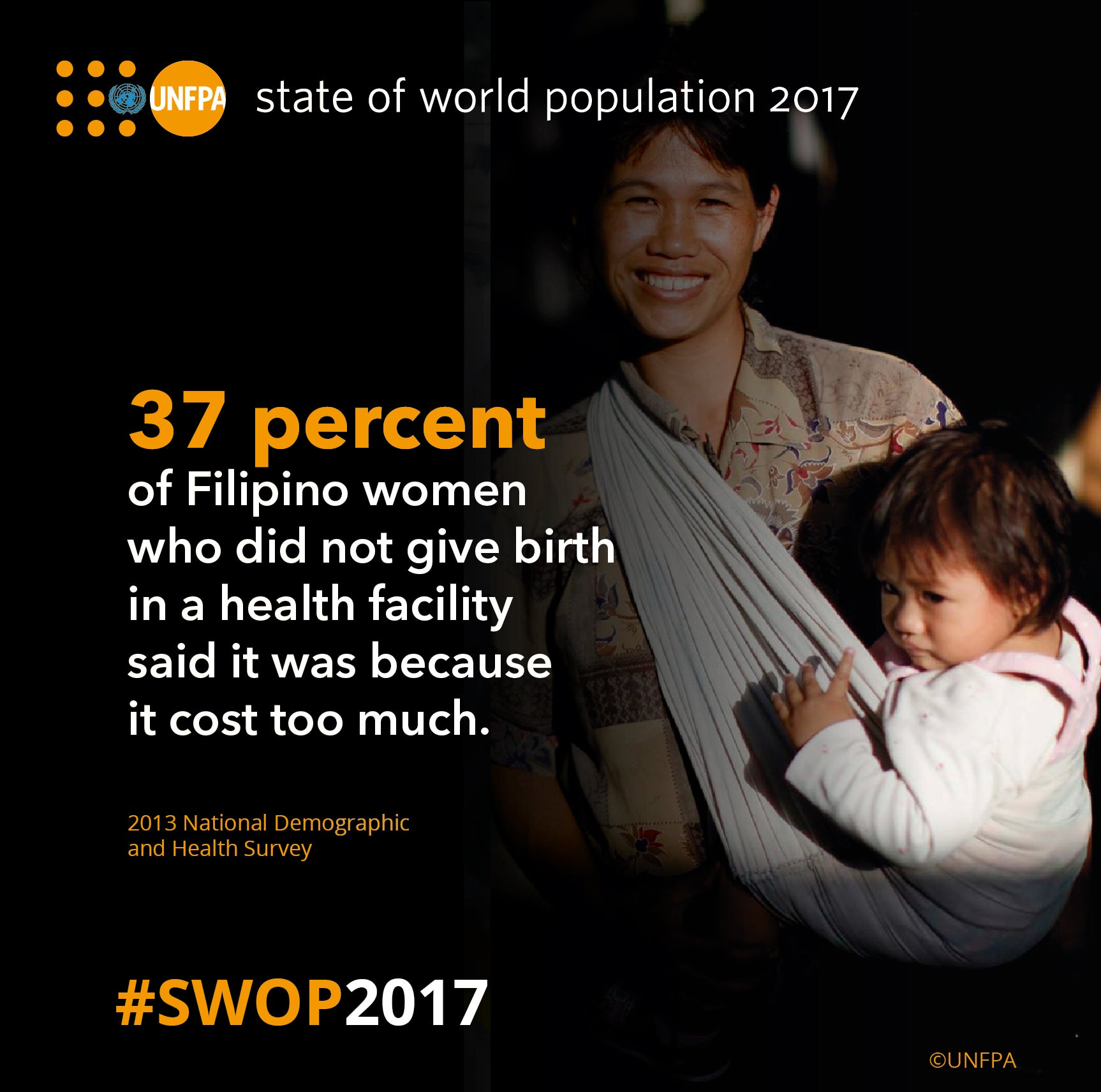I am pleased to be invited in today’s forum and to present highlights of the 2017 State of the World Population Report as it relates to issues on sexual and reproductive health and rights in the Philippines. This topic is timely not only because of the impending review of the Responsible Parenthood and Reproductive Health Law as mandated by the law itself, but also because we are now seeing hopefully a more accelerated implementation of the law after the Food and Drugs Administration’s ruling re-certifying all contraceptives reviewed.
In October, UNFPA, the United Nations Population Fund, launched the 2017 State of World Population Report with the theme, Worlds Apart: Reproductive Health and Rights in an Age of inequality. The report discusses the gaps and bottlenecks in accessing reproductive health services especially among the most vulnerable and the marginalized, with an urgent call for countries and communities to work together towards closing these gaps so that we will be able to realize the vision of the 2030 Agenda for Sustainable Development of leaving no one behind.
The report highlights the reality that women and girls are living worlds apart from each other as well as from men and boys, in terms of access to healthcare and opportunities for education, employment, and political participation.
In 2015, the World Bank elevated the Philippines to a lower middle-income country status, a reflection of the country’s rise in economic growth and potential. But behind this distinction, there pockets of poverty and inequality still remain in the Philippines.
Let us look at a few of these pockets as they relate to the RPRH law.

Maternal mortality remains high in the Philippines and has changed little if at all in decades. One reason is costs of delivering safely in a health facility. 37 percent of women who did not give birth in a health facility in this country said it was because it costs too much, according to the 2013 National Demographic and Health Survey.
We also know that teen pregnancy is on the rise. Data from the 2013 National Demographic and Health Survey shows that while fertility rate across all age groups is declining, fertility among the 15-19 year olds is rising, and that one in ten girls 15-19 years old is already a mother. We know that motherhood in childhood puts a girl at a disadvantage as it shifts her priorities from education to taking care of her child and, perhaps, running a family early in life.
And in the Philippines, teenage pregnancy is three times likelier to happen for girls who have no education than those who reached college, according to the 2013 Young Adult Fertility and Sexuality study.
Teenage pregnancy does not only impact on the life of poor girls but also robs a country of more economic opportunities. A study conducted by Dr. Herrin shows that, because of teenage pregnancy the Philippines stands to lose about 33 Billion Pesos annually in lost income opportunities for the affected girls. This is equivalent to about 1 per cent of the annual Gross Domestic Product of the country.

One measure of access to sexual and reproductive health services is the extent to which a woman who wants to use a modern method of contraception has access to it. In the Philippines, unmet need for family planning among the poorest quintile is 4 percentage points higher than the unmet need among the richest quintile Indeed, access to family planning services is a foundational element not just of reproductive health, but of social and economic equality, since unintended pregnancy constrains opportunities that women would otherwise have for education and economic advancement
Studies show that inequalities in sexual and reproductive health and rights are intertwined with gender inequality. In many societies, pregnancy and child-rearing can mean exclusion from the labor force or lower earnings. The challenges are even greater for women who lack the means to decide whether, when or how often they become parents.
Once in the paid labor force, women find themselves earning less than men for the same types of work. This phenomenon is called the gender wage gap. Then, there is that so-called motherhood penalty where women are passed over for employment, promotions or salary increases because of the anticipation of a pregnancy-related leave.
In addition, women do on average 2.5 times more household work than men. This all the more limits women’s opportunities to engage in paid employment.
Reducing inequality in health, particularly reproductive health and family planning, can have a potential impact on economies through a demographic dividend. The demographic dividend sets in motion a virtuous cycle in which enhancement of human capabilities – through interventions in health and nutrition, education and employment – accelerates economic growth which in turn increases the potential for families and governments to invest additional resources in building the capabilities of the next generations. And this can only be possible if everyone – especially the youth, the vulnerable and marginalized – are reached out by these investments.
Closing the gap in access to reproductive health and family planning services will not only benefit women, but will also their societies and families.

For societies, there will be increases in growth of GDP and GDP per capita, increases in the number of working age adults relative to dependent children, and decreases in demand for public expenditure in education, housing and sanitation.
For families and household, improved sexual and reproductive health care results in increased savings and household assets, reduced number of children who become orphans and increased resources for children, especially for schooling.
For women, there will be an increase in the ability to continue education, in production and in earnings, and will promote autonomy, self-esteem and gender equity.
Closing the gap in access to reproductive health and family planning services, is essentially what the RPRH law is all about so full implementation of the law will not only help women and girls, especially the poorest and least educated, become healthier and ultimately richer with communities and the entire country benefitting as well. The law is also about comprehensive sexuality education which is yet to be fully implemented with predictable consequences in terms of increasing teenage pregnancies.
While the RPRH law has many strengths one weakness it has is that after it was passed minors below 18 must have parental consent in order to obtain modern family planning. This inequity between those above 18 and those below 18 being able to exercise their reproductive rights is a critical one that we hope can be revisited as part of the review of the law or as new legislation is being considered. It will be particularly important if we are to address the increase in teenage pregnancy.
In conclusion, let me say that the challenge of reducing inequality is easier said than done. It is a challenge that all citizens must take on because the stakes are high for the least fortunate women and girls who do not deserve to live worlds apart, but deserve to be part of a world where they too enjoy a life of prosperity, progress, and equality. A world where no one is left behind.
Thank you.



